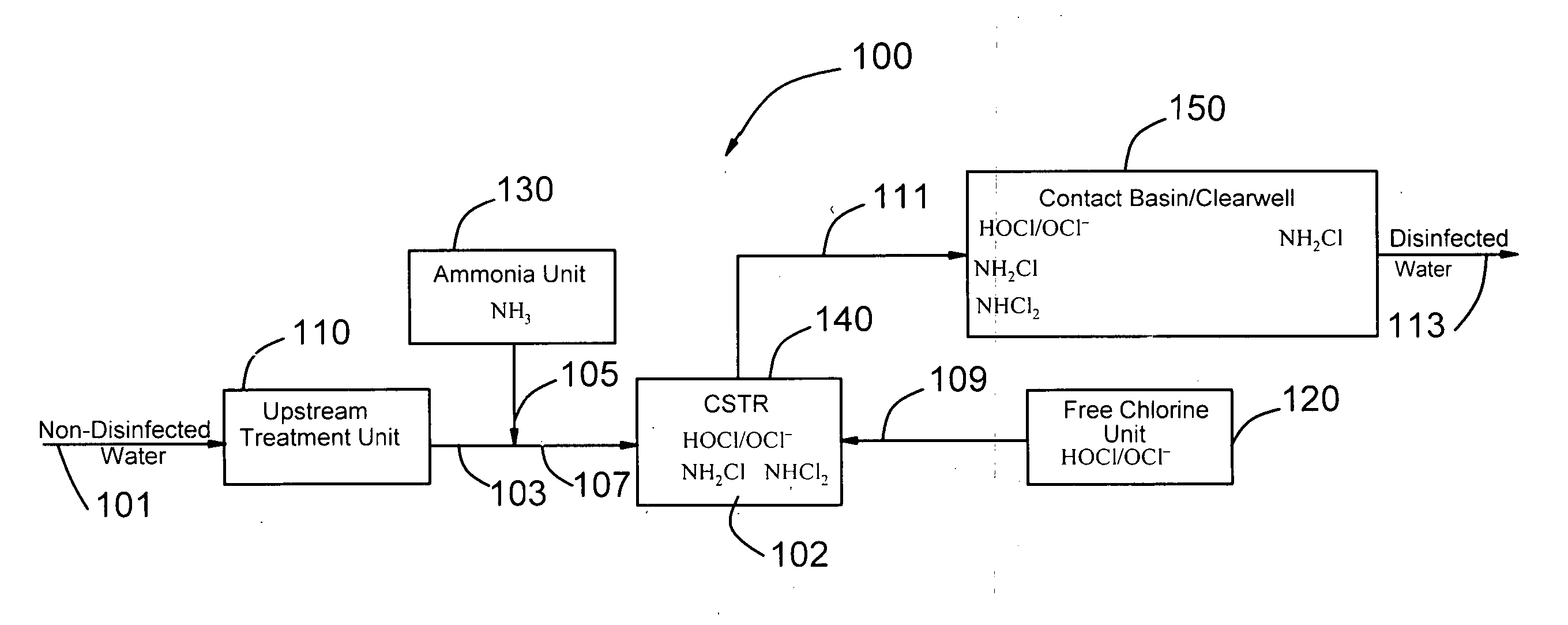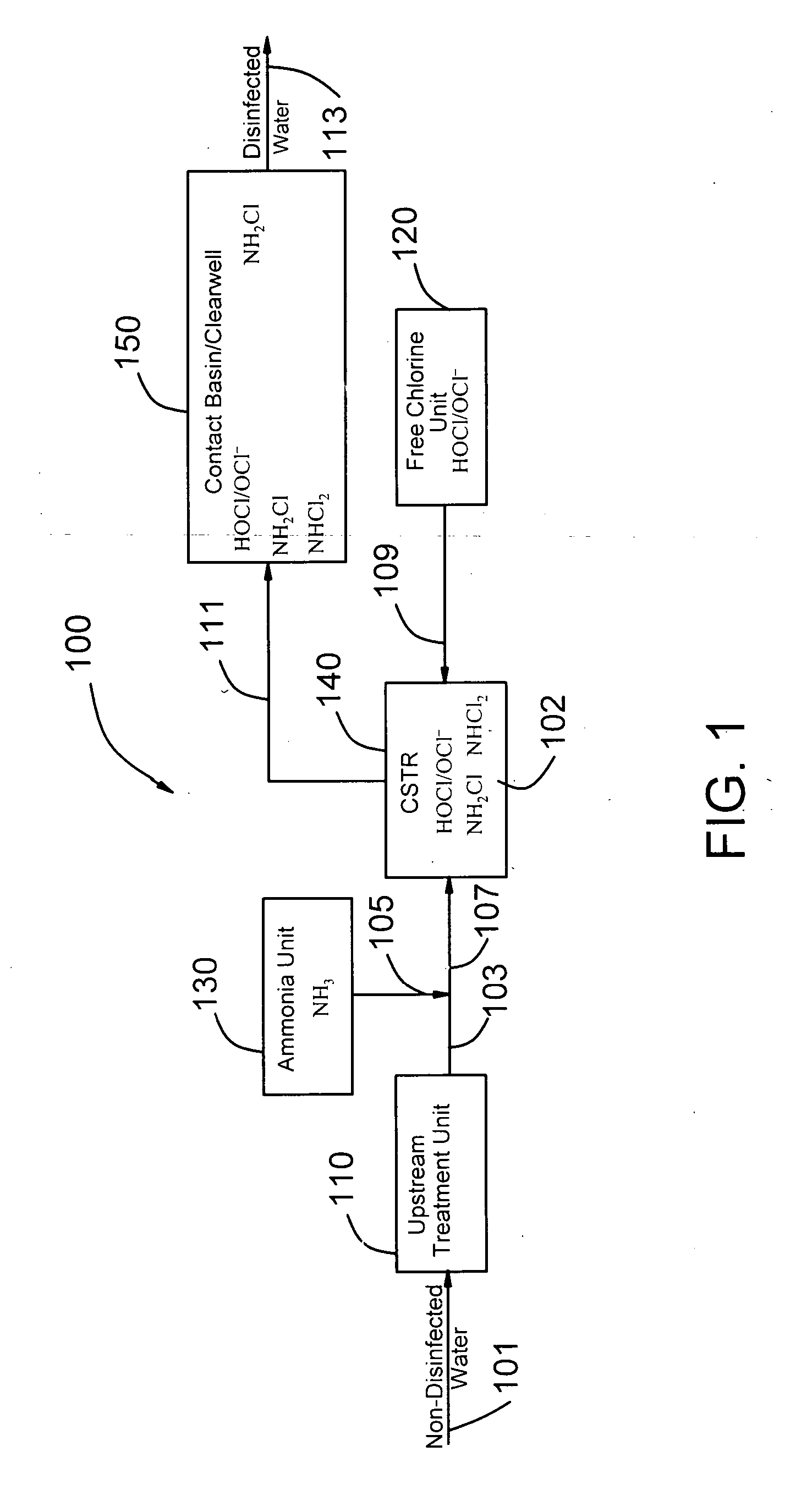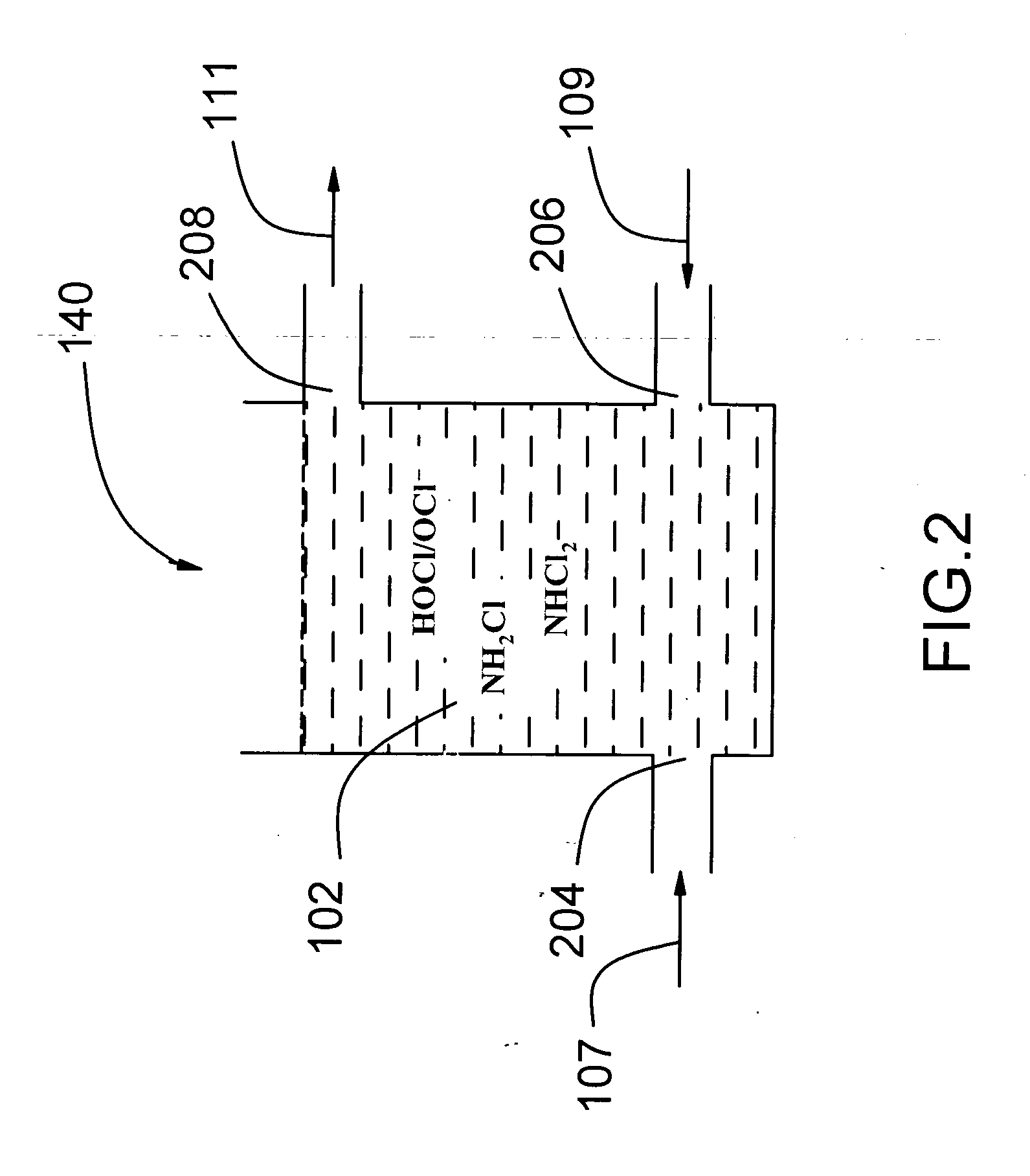Water disinfection system using simultaneous multiple disinfectants
a disinfection system and water technology, applied in the field of water treatment, can solve the problems of ozone and chlorine dioxide producing disinfection byproducts, requiring sophisticated operational skills, and affecting human health,
- Summary
- Abstract
- Description
- Claims
- Application Information
AI Technical Summary
Problems solved by technology
Method used
Image
Examples
Embodiment Construction
[0023]FIG. 1 is a block diagram of a simultaneous multiple disinfectant (SMD) system. The SMD system 100 includes an upstream treatment unit 110 receiving non-disinfected water 101. The non-disinfected water 101 may be a drinking water that has undergone any other necessary treatment before the disinfection process. For drinking water, the upstream treatment unit 110 is a filtration unit. The non-disinfected water 101 may also be a treated wastewater effluent that is ready for disinfection. For treated wastewater effluent, the upstream treatment unit 110 can be a secondary clarifier, a secondary clarifier followed by tertiary treatment units such as a multimedia filtration unit, carbon adsorption unit or the combination of other tertiary wastewater polishing units used to increase the quality of the wastewater effluent.
[0024] The non-disinfected treated water 103 coming out of the upstream treatment unit 110 is mixed with ammonia 105 from the ammonia unit 130 to form the ammoniated...
PUM
| Property | Measurement | Unit |
|---|---|---|
| pH | aaaaa | aaaaa |
| pH | aaaaa | aaaaa |
| pH | aaaaa | aaaaa |
Abstract
Description
Claims
Application Information
 Login to View More
Login to View More - R&D
- Intellectual Property
- Life Sciences
- Materials
- Tech Scout
- Unparalleled Data Quality
- Higher Quality Content
- 60% Fewer Hallucinations
Browse by: Latest US Patents, China's latest patents, Technical Efficacy Thesaurus, Application Domain, Technology Topic, Popular Technical Reports.
© 2025 PatSnap. All rights reserved.Legal|Privacy policy|Modern Slavery Act Transparency Statement|Sitemap|About US| Contact US: help@patsnap.com



